Whenever I’m asked which artists are on my list of powerhouse creators, Johnnie Christmas always gets a mention. His recent sci-fi series Tartarus, an alternative kind of sci-fi that is all kinds of Afrofuturistic, is one of the reasons why.
Tartarus is a different kind of epic space story that follows a woman called Tilde as she reclaims a glorious and legendary past that was kept from her. The comic is nothing short of an ambitious Afro sci-fi tale that respects the classics but is not looking to merely follow in their footsteps. It’s walking to another beat altogether. Its majority black cast of characters plays an important role in this.
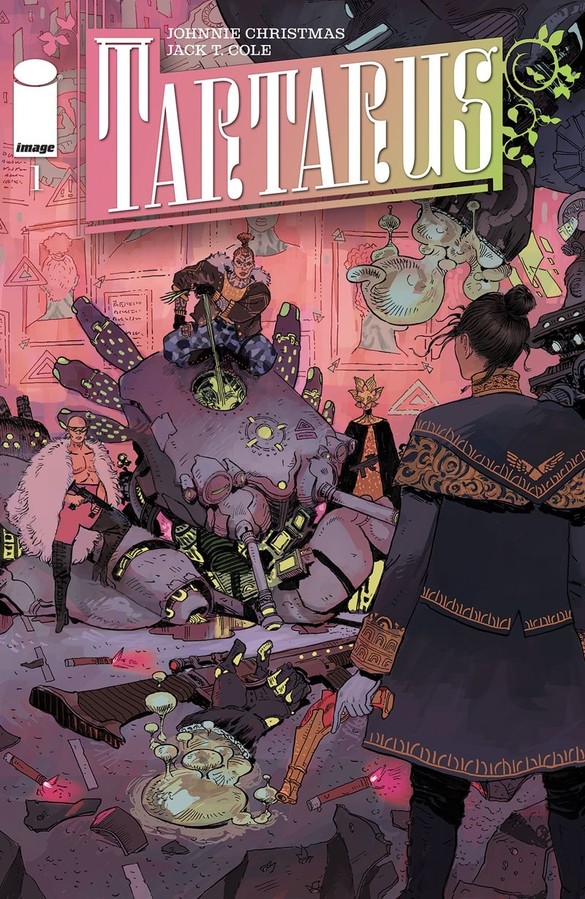
I cannot begin to express how happy I was looking through the pages of Tartarus and seeing a universe shaped by blackness. It was not only organic, but it made the story feel like it already had a living, breathing culture of black thought embedded in its reality. That culture was driving it forward, backed up by intricate nuances and ideas. And I’m talking from the architecture of its universe all the way to its lore. It’s a world born and shaped by the black experience. This alone makes the story worth your attention.
Christmas takes on the writing role for Tartarus while Jack T. Cole works on the art, but their collaboration is palpable on each of the comic’s pages. The art and text complement each other perfectly as each one resists imposing itself on the another in storytelling terms. The responsibility of telling the story isn’t shared — it’s seamlessly integrated. Tartarus quite simply showcases an impressive marriage of talent.
Christmas has been amassing a body of work that carries a very unique narrative vision. His art on works such as Angel Catbird, Firebug, and the adaptation of William Gibson’s Alien 3 (which he also scripted) had already set him apart due to a uniquely kinetic and bright visual style that makes every panel explode on the comics page.
This style’s at its best in Alien 3, where Christmas unapologetically takes it upon himself to give us his own interpretation of the Alien franchise, substituting the heavy shadows that hide the xenomorph with more brightly-lighted areas so as to fully appreciate the carnage the Alien unleashes in full color.
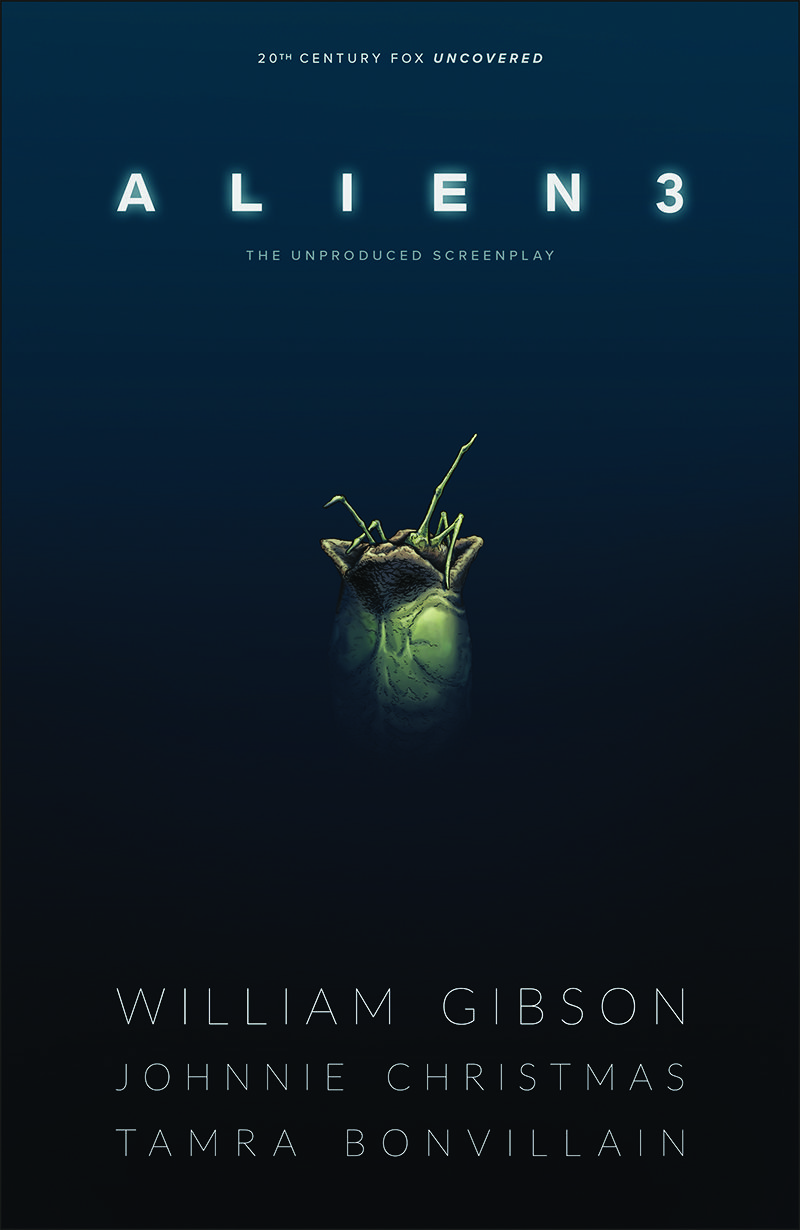
I sat down with Christmas to talk about Tartarus and just what went into its recipe to create one of the most impressive new sci-fi worlds in comics today. The interview follows below, along with sneak peaks of Tartarus #3.
Ricardo Serrano: When you were in the development process for Tartarus, were you looking at specific books or ideas you wanted to capture in the comic? I couldn’t help noticing bits of Jodorowsky’s and Moebius’ The Incal and other more classic sci-fi elements imbedded in the story.
Johnnie Christmas: We kind of reversed engineered it through character. Our ideas on what the world was and how it was going to manifest itself were already pretty well laid out. We just needed it to be a place our characters could best be presented in. What kind of world these characters would live in? If the characters are fearsome and combative then their world would have to be even more so.
That mutual feedback really guided us in terms of the tech we would include in the world and whether characters would be able to be good at them or not. Their literacy on the tech of their world really says a lot about to our characters while shaping their personalities.
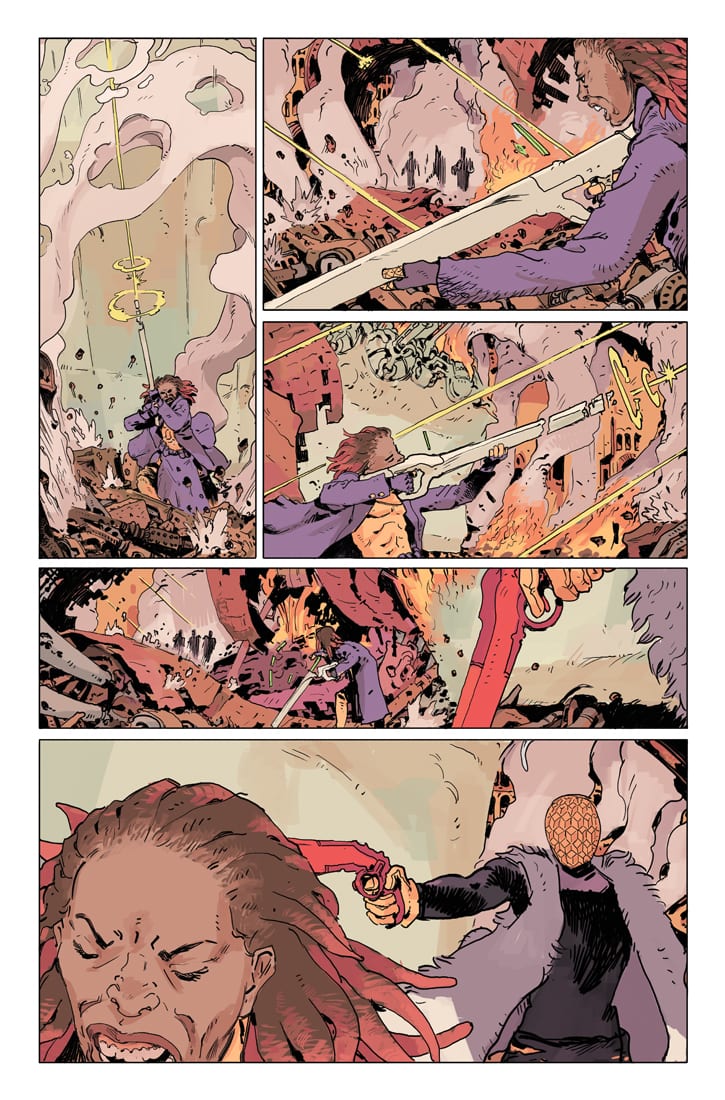
Serrano: The attention to world-building is apparent in that regard. The amount of detail and the lived-in sensation it has makes it feel like a triple-sized sci-fi world.
Christmas: We really wanted the story to not come off as light. We wanted a fully fledged and living environment, which is why our first issue is so big. We wanted to include as much as we could in it. We didn’t want boxes of exposition explaining everything.
We wanted the visuals to do a lot of the storytelling. Same with our characters. If we showed a fearsome warrior on the page being precisely that then we could forego the exposition. There’s a heavy sense of history behind the story and we wanted the characters to have to engage with it when making their decisions.
Serrano: You’ve developed a very unique art style that is both vibrant, kinetic, and bright. In Tartarus, Jack T. Cole takes over visual responsibilities. What goes into the collaboration process when you’re not also doing the penciling?
Christmas: Part of it is precisely that, the collaboration. To be able to talk to Jack and come up with ways to better show something, be it a character or an idea, is just pure joy. We really craft our story based on our own understanding of its world. The feedback we get out of those worldviews gets mixed into the comic. It’s a fun game of interpretations.
Serrano: As massive as Tartarus #1 is, it’s in issue #2 where we really get a look at the titular location. Honestly, it is one of the most complex and beautifully designed worlds in comics now. I know we talked about inspirations before, but what was the thought process behind the look and feel of this particular setting?
Christmas: We wanted Tartarus to stand in contrast to the clean lines of Olympus Station. That station being a military installation, I wanted it to read as very orderly. Tartarus, in contrast, is a lot more organic and chaotic, but also somewhat beautiful. I described Tilde’s first seeing the city as her ship approached as “a luminescent black pearl on the horizon.” Jack then made the colony the shape of a pearl. Then there are lots of “lived-in” elements Jack padded the world out with. It’s an entirely unique take on a sci-fi setting.
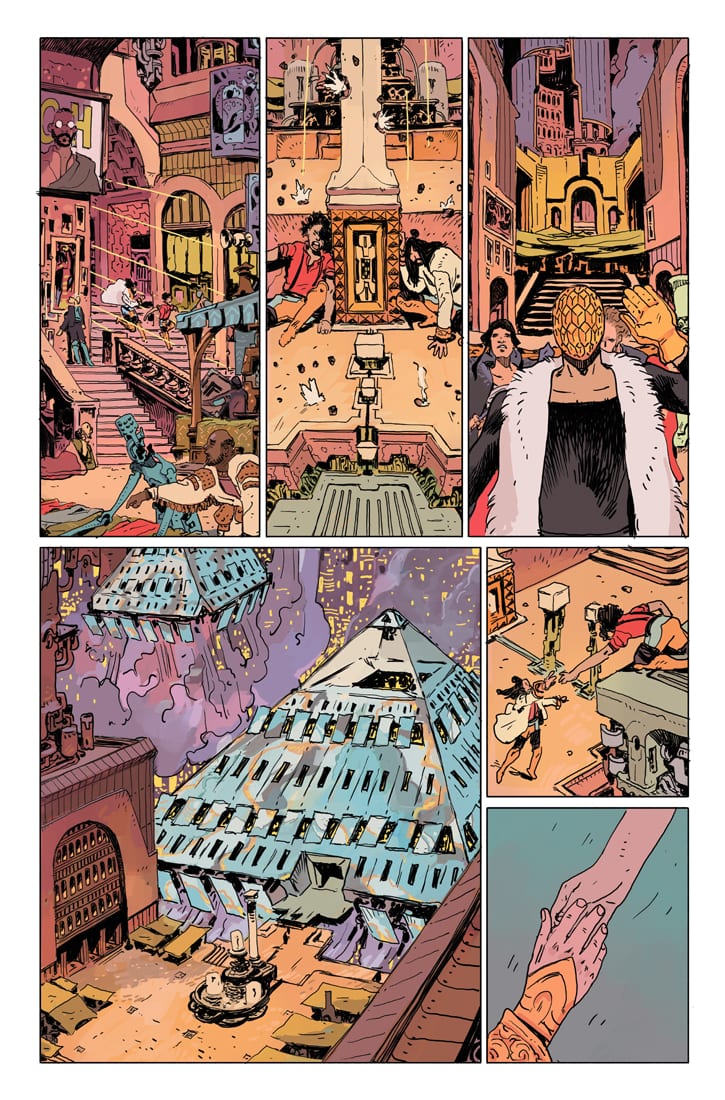
Serrano: Issue #2 also has a stronger sense of myth to it. In Greek mythology, Tartarus is a place of torment but also the name of one of the original Titans. Are you planning on remixing these elements to make them fit into the story?
Christmas: Only when it’s fun or adds a bit of narrative backbone. I don’t want to rely too heavily on Greek myth, because I don’t want to make folks feel like they’re missing out on important story elements if they aren’t familiar with those myths. We’re telling a new story, but there are pretty easily spotted Greek mythological Easter eggs for anyone keeping their eyes peeled for those elements.
Serrano: Tartarus #2 came out smack in the middle of the COVID-19 quarantines. What was the experience like, knowing your comic was out there despite all the things that were and still are happening all around us? How did fans respond?
Christmas: Fans have been really supportive, though we all have very limited control in the face of a global pandemic. The experience has been brutal to be honest, all the planning, build up and roll out being dampened by the virus. Though, I am obviously 100% in support of the efforts to “flatten the curve” and come out of this with as little loss to human life as we dare hope. Economic considerations are small concerns in comparison.
Serrano: Are you working on any projects or merch that have been helping out during the pandemic?
Christmas: We’re still cranking out Tartarus, so we’re ready to drop when the re-scheduling happens. There are a few other things I have in the hopper, which will be public soon.
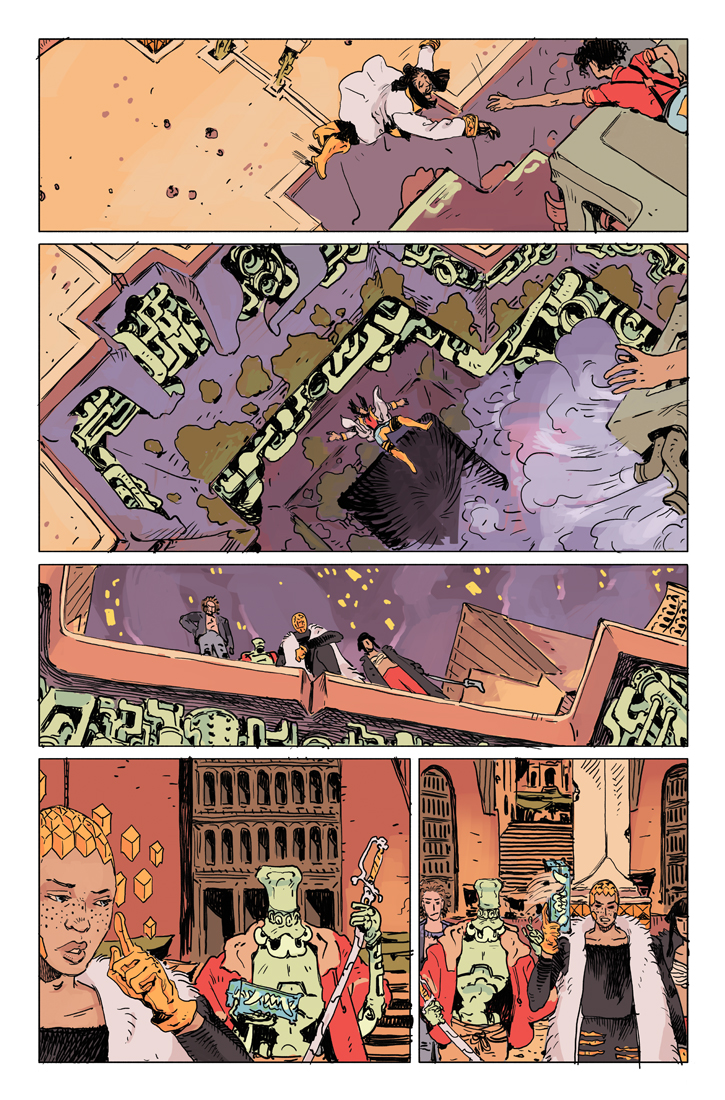
Serrano: Thanks!
Christmas: Thank you!
Published by Image Comics, the first two issues of Tartarus are available in stores and digitally now.


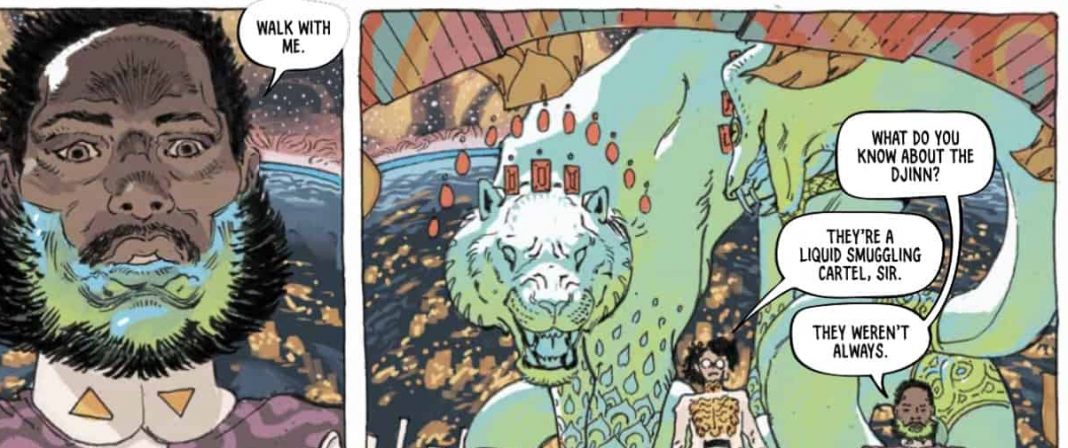


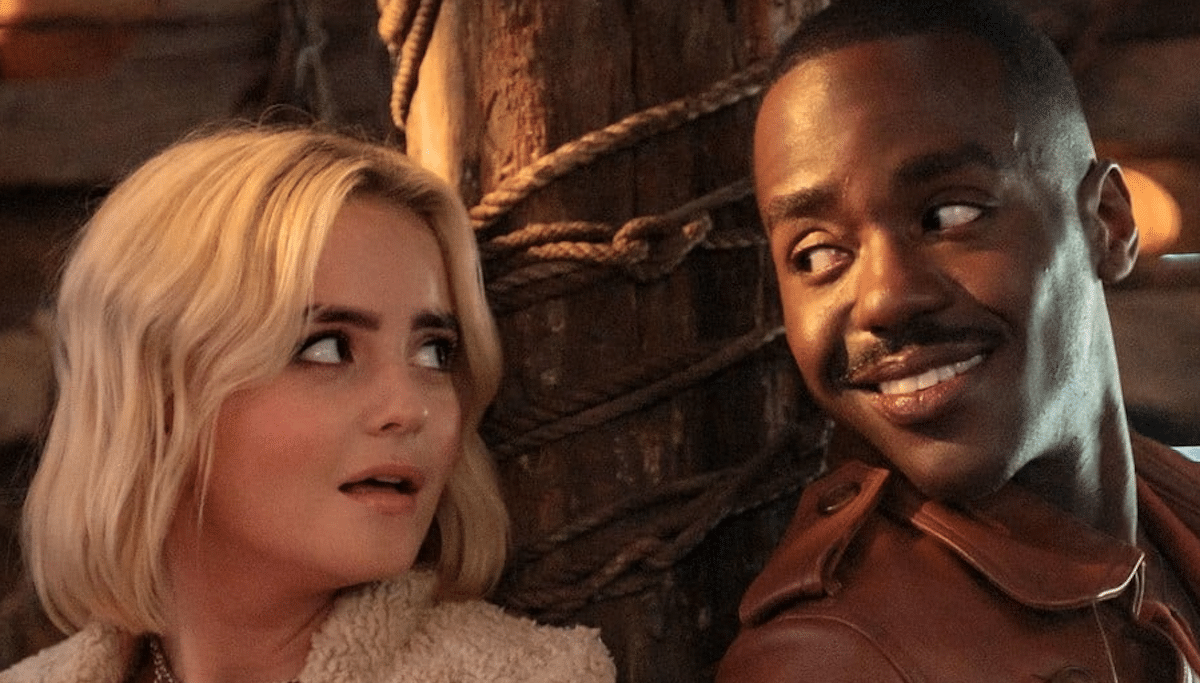


tartarus is absolutely brilliant!
Comments are closed.